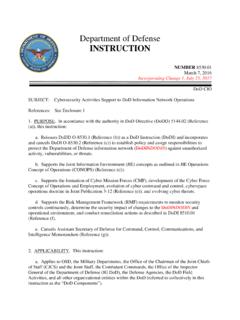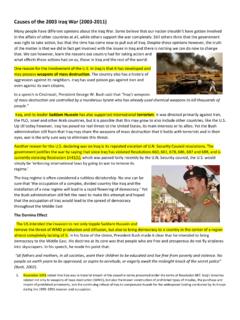Transcription of Impro Improvisation and the Theatre - Keith Johnstone
1 Impro Impro is the most dynamic, funny, wise, practical and provocative book on Theatre craft that I have ever read (James Roose-Evans). Keith Johnstone s involvement with the Theatre began when George Devine and Tony Richardson, artistic directors of the Royal Court Theatre , commissioned a play from him. This was in 1956. A few years later he was himself Associate Artistic Director, working as a play-reader and director, in particular helping to run the Writers Group. The improvisatory techniques and exercises evolved there to foster spontaneity and narrative skills were developed further in the actors studio, then in demonstrations to schools and colleges and ultimately in the founding of a company of performers, called The Theatre Machine. Divided into four sections, Status , Spontaneity , Narrative Skills and Masks and Trance , arranged more or less in the order a group might approach them, the book sets out the specific techniques and exercises which Johnstone has himself found most useful and most stimulating.
2 The result is both an ideas book and a fascinating exploration of the nature of spontaneous creativity. The book s incredible achievement is its success in making Improvisation re-live on the page .. Get Mr Johnstone s fascinating manual and I promise you that if you open at the first page and begin to read you will not put it down until the final page. (Yorkshire Post) He suggests a hundred practical techniques for encouraging spontaneity and originality by catching the subconscious unawares. But what makes the book such fun is the teacher s wit. Here is an inexhaustible supply of zany suggestions for unfreezing the petrified imagination. (Daily Telegraph) The front cover shows a moment from The Defeat of Giant Big Nose, an improvised children s play presented by Keith Johnstone s Loose Moose Theatre Company in Calgary, Alberta. Photo by Deborah A. lozzi. Also Available Eugenio Barba DICTIONARY OF Theatre ANTHROPOLOGY: the secret Art of the Performer Jean Benedetti STANISLAVSKI: AN INTRODUCTION Augusto Boal GAMES FOR ACTORS AND NON-ACTORS Richard Boleslavsky ACTING: THE FIRST SIX LESSONS Jean Newlove LABAN FOR ACTORS AND DANCERS Constantin Stanislavski AN ACTOR PREPARES BUILDING A CHARACTER CREATING A ROLE MY LIFE IN ART STANISLAVSKI S LEGACY Impro Improvisation and the Theatre Keith Johnstone With an Introduction by IRVING WARDLE Published by Routledge / Theatre Arts Books 711 Third Avenue New York, NY 10017 First published in paberback in 1981 by Eyre Methuen Ltd Reprinted 1982, 1983, 1985, 1987 Reprinted in 1989 by Methuen Drama, Michelin House, 81 Fulham Road, London SW3 6RB Reprinted 1990, 1991, 1992 Originally published in hardback by Faber and Faber Ltd in 1979.
3 Corrected for this edition by the author Copyright 1979, 1981 by Keith Johnstone Introduction copyright 1979 by Irving Wardle Library of Congress Cataloging-in-Publication Data available on request All rights reserved. No part of this book may be reprinted or reproduced or utilized in any form or by any electronic, mechanical, or other means, now known or hereafter invented, including photocopying and recording or in any information storage or retrieval system, without permission in writing from the publishers. ISBN 13: 978-0-87830-117-1 Contents INTRODUCTION NOTES ON MYSELF STATUS SPONTANEITY NARRATIVE SKILLS MASKS AND TRANCE APPENDIX Introduction If teachers were honoured in the British Theatre alongside directors, designers, and playwrights, Keith Johnstone would be as familiar a name as are those of John Dexter, Jocelyn Herbert, Edward Bond and the other young talents who were drawn to the great lodestone of the Royal Court Theatre in the late 195os.
4 As head of the Court s script department, Johnstone played a crucial part in the development of the writers Theatre , but to the general public he was known only as the author of occasional and less than triumphant Court plays like Brixham Regatta and Performing Giant. As he recounts in this book, he started as a writer who lost the ability to write, and then ran into the same melancholy impasse again when he turned to directing. What follows is the story of his escape. I first met Johnstone shortly after he had joined the Court as a los-a-script play-reader, and he struck me then as a revolutionary idealist looking around for a guillotine. He saw corruption everywhere. John Arden, a fellow play-reader at that time, recalls him as George Devine s subsidised extremist, or Keeper of the King s Conscience . The Court then set up its Writers Group and Actors Studio, run by Johnstone and William Gaskill, and attended by Arden, Ann Jellicoe and other writers of the Court s first wave.
5 This was the turning point. Keith , Gaskill says, started to teach his own particular style of Improvisation , much of it based on fairy stories, word associations, free associations, intuitive responses, and later he taught mask work as well. All his work has been to encourage the rediscovery of the imaginative response in the adult; the refinding of the power of the child s creativity. Blake is his prophet and Edward Bond his pupil. Johnstone s all-important first move was to banish aimless discussion and transform the meetings to enactment sessions; it was what happened that mattered, not what anybody said about it. It is hard now to remember how fresh this idea was in 1958, Ann Jellicoe says, but it chimed in with my own way of thinking. Other members were Arnold Wesker, Wole Soyinka, and David Cregan as well as Bond who now acknowledges Johnstone as a catalyst who made our experience malleable by ourselves.
6 As an example, he cites an exercise in blindness which he later incorporated in his play Lear; and one can pile up examples from Arden, Jellicoe, and Wesker of episodes or whole plays deriving from the group s work. For Cregan, Johnstone knew how to unlock Dionysus : which came to the same thing as learning how to unlock himself. From such examples one can form some idea of the special place that teaching occupied in Devine s Royal Court; and how, in Johnstone s case, it was the means by which he liberated himself in the act of liberating others. He now hands over his hard-won bunch of keys to the general reader. This book is the fruit of twenty years patient and original work; a wise, practical, and hilariously funny guide to imaginative survival. For anyone of the artist type who has shared the author s experience of seeing his gift apparently curl up and die, it is essential reading. One of Johnstone s plays is about an impotent old recluse, the master of a desolate castle, who has had the foresight to stock his deep-freeze with sperm.
7 There is a power-cut and one of the sperm escapes into a goldfish bowl and then into the moat where it grows to giant size and proceeds to a whale of a life on the high seas. That, in a nut-shell, is the Johnstone doctrine. You are not imaginatively impotent until you are dead; you are only frozen up. Switch off the no-saying intellect and welcome the unconscious as a friend: it will lead you to places you never dreamed of, and prcduce results more original than anything you could achieve by aim ag at originality. Open the book at any of the exercises and you will see how the unconscious delivers the goods. Here are a group of hippopotamuses knitting pullovers from barbed wire, and a patient suffering from woodworm who infects the doctor s furniture. There are poems transcribed from thin air, masked actors magicked back to childhood, Victorian melodrama played in extempore verse. At the point where rational narrative would come to a stop, Johnstone s stories carry on cheerfully into the unknown.
8 If a desperate schoolmaster kills himself he will find a plenary session of the school governors awaiting him at the pearly gates. Or if our hero is swallowed by a monster, he will change into a heroic turd and soldier on to fresh adventures. I have seen none of this material in performance, either by students or by Johnstone s Theatre Machine company; and one of the book s achievements is its success in making improvisations re-live on the page. Like all great advocates of the unconscious, Johnstone is a sturdy rationalist. He brings a keen intellect, nourished on anthropology and psychology, to the task of demolishing intellectualism in the Theatre . And where no technical vocabulary exists, he develops his own down-to-earth shorthand to give a simple name to the indescribable. In rediscovering the imaginative world of childhood, he has re-examined the structural elements that bind that world together.
9 What is a story? What makes people laugh? What relationships hold an audience s interest, and why? How does an improviser think up what comes next? Is conflict dramatically necessary? (The answer is No.) To these and other fundamental questions the book returns unexpected and invariably useful answers. Answers that extend Theatre into the transactions of everyday life. One s first impulse on reading about these actors games is to go and try them out on the kids, or to have a go yourself. Like this. From anthills in the north I come with wand in hand to slay all people there that I could understand. At last one heap was left Untamed by all my foes until I caught the bees and dealt them mighty blows. That was a nonstop poem written in fifty seconds flat. It may not be much, but it is more than I have ever got from any other text-book on the imagination. The difference is that Johnstone s analysis is not concerned with results, but with showing you how to do it; and his work ranks as a pioneer contribution to the exceedingly sparse literature of comic theory from which comic practitioners really have something to learn.
10 It certainly has more to offer than Meredith, Bergson, or Freud, to whom the suicidal hero of Heathcote Williams s Hancock s Last Half Hour turns in his time of need; dipping hopefully into Jokes and their Connection with the Unconscious, and then dropping the book with the despairing cry, How would he do second house at the Glasgow Empire? If Hancock had picked up this book, there might have been a happy ending. IRVING WARDLE Notes on Myself As I grew up, everything started getting grey and dull. I could still remember the amazing intensity of the world I d lived in as a child, but I thought the dulling of perception was an inevitable consequence of age just as the lens of the eye is bound gradually to dim. I didn t understand that clarity is in the mind. I ve since found tricks that can make the world blaze up again in about fifteen seconds, and the effects last for hours. For example, if I have a group of students who are feeling fairly safe and comfortable with each other, I get them to pace about the room shouting out the wrong name for everything that their eyes light on.


